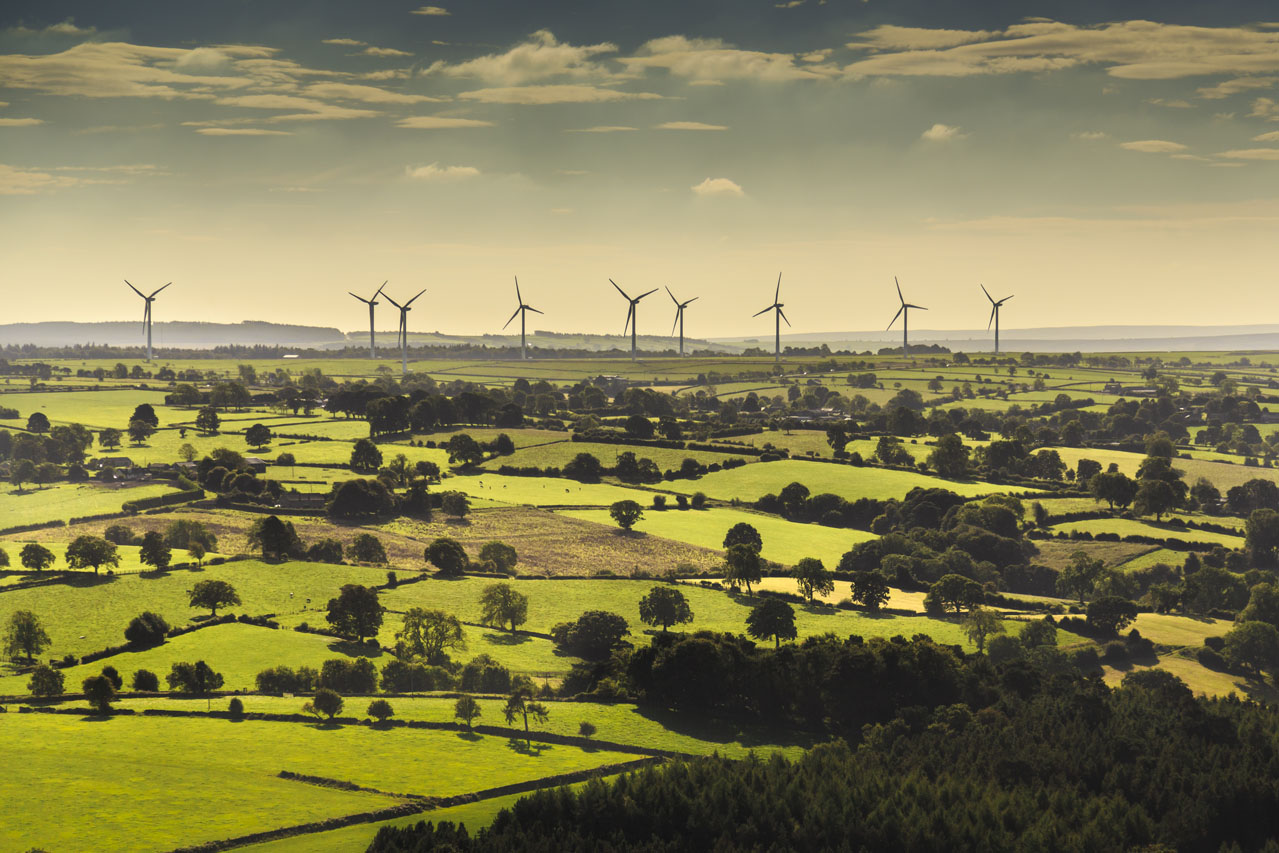


Underground energy storage in the form of compressed air and green hydrogen can provide one of the cheapest forms of energy storage using proven technology. This reflects long asset life (35 years plus), unlimited storage cycles, and significantly low capital costs.
The Green Hydrogen Hub Denmark project, of which Corre Energy is the consortium lead, utilises green hydrogen and CAES to provide sustainable energy for a range of purposes.

The EU recognises the importance of energy storage in helping to achieve security of supply and decarbonisation objectives. Grid-scale, hydrogen-fuelled compressed air and hydrogen storage in salt caverns is pivotal in supporting the transition to the wider hydrogen economy on a continental scale.
The EU Green Deal calls for the acceleration of renewables, green hydrogen and storage, stating these are needed for deep decarbonisation and the achievement of the 2050 targets.Corre Energy's project roadmap with solutions of hydrogen-fuelled compressed air and hydrogen storage in salt caverns are globally scalable technologies that can offer decarbonisation and accelerate the journey towards net-zero targets.
The EU’s objective is to reach over 80% renewable energy by 2050. Corre Energy is accelerating this energy transition through underground energy storage by developing, building and operating storage systems in salt caverns, specifically hydrogen-fuelled Compressed Air Energy Storage (CAES), green hydrogen production, and storage in salt caverns.
Corre Energy’s roadmap includes several potential projects in the pipeline, initially with two in the Netherlands and two in Denmark, Corre Energy has further underground energy storage projects located across the globe. These projects have been recognised by the European Network of Transmission System Operators for Gas (ENTSOG), and included on ENTSOG’s Ten Year Network Development Plan (TYNDP).
Terms & Conditions | Privacy Policy | Cookie Policy | Careers
Copyright Corre Energy © 2024. All rights reserved.
| Cookie | Duration | Description |
|---|---|---|
| __cf_bm | 1 hour | This cookie, set by Cloudflare, is used to support Cloudflare Bot Management. |
| cookielawinfo-checkbox-analytics | 1 year | Set by the GDPR Cookie Consent plugin, this cookie records the user consent for the cookies in the "Analytics" category. |
| cookielawinfo-checkbox-necessary | 1 year | Set by the GDPR Cookie Consent plugin, this cookie records the user consent for the cookies in the "Necessary" category. |
| cookielawinfo-checkbox-performance | 1 year | Set by the GDPR Cookie Consent plugin, this cookie stores the user consent for cookies in the category "Performance". |
| CookieLawInfoConsent | 1 year | CookieYes sets this cookie to record the default button state of the corresponding category and the status of CCPA. It works only in coordination with the primary cookie. |
| incap_ses_* | session | This is an Incapsula DDoS Protection and Web Application Firewall cookie that is used to relate HTTP requests to a certain session. |
| JSESSIONID | session | New Relic uses this cookie to store a session identifier so that New Relic can monitor session counts for an application. |
| PHPSESSID | 1 year | This cookie is native to PHP applications. The cookie stores and identifies a user's unique session ID to manage user sessions on the website. The cookie is a session cookie and will be deleted when all the browser windows are closed. |
| viewed_cookie_policy | 1 year | The GDPR Cookie Consent plugin sets the cookie to store whether or not the user has consented to use cookies. It does not store any personal data. |
| visid_incap_* | 1 year | Incapsula sets this cookie to provide cloud-based website security services. |
| wpEmojiSettingsSupports | session | WordPress sets this cookie when a user interacts with emojis on a WordPress site. It helps determine if the user's browser can display emojis properly. |
| Cookie | Duration | Description |
|---|---|---|
| _cfuvid | session | This cookie serves the purpose of enabling the Cloudflare Web Application Firewall (WAF) to differentiate between individual users who share the same IP address. |
| Cookie | Duration | Description |
|---|---|---|
| VISITOR_INFO1_LIVE | 6 months | YouTube sets this cookie to measure bandwidth, determining whether the user gets the new or old player interface. |
| VISITOR_PRIVACY_METADATA | 6 months | YouTube sets this cookie to store the user's cookie consent state for the current domain. |
| YSC | session | Youtube sets this cookie to track the views of embedded videos on Youtube pages. |
| yt-remote-connected-devices | never | YouTube sets this cookie to store the user's video preferences using embedded YouTube videos. |
| yt-remote-device-id | never | YouTube sets this cookie to store the user's video preferences using embedded YouTube videos. |
| yt.innertube::nextId | never | YouTube sets this cookie to register a unique ID to store data on what videos from YouTube the user has seen. |
| yt.innertube::requests | never | YouTube sets this cookie to register a unique ID to store data on what videos from YouTube the user has seen. |
| Cookie | Duration | Description |
|---|---|---|
| _ga | 1 year 1 month 4 days | Google Analytics sets this cookie to calculate visitor, session and campaign data and track site usage for the site's analytics report. The cookie stores information anonymously and assigns a randomly generated number to recognise unique visitors. |
| _ga_* | 1 year 1 month 4 days | Google Analytics sets this cookie to store and count page views. |
| _gat_gtag_UA_* | 1 minute | Google Analytics sets this cookie to store a unique user ID. |
| _gid | 1 day | Google Analytics sets this cookie to store information on how visitors use a website while also creating an analytics report of the website's performance. Some of the collected data includes the number of visitors, their source, and the pages they visit anonymously. |
